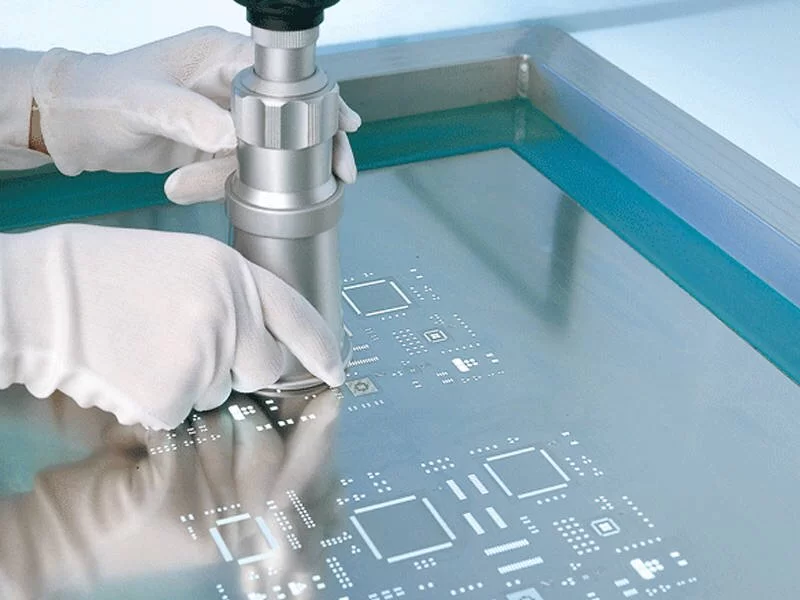SMT solder paste It mainly consists of solder alloy powder, flux, and some additives. The solder alloy powder is usually tin-lead (Sn-Pb) alloy, lead-free alloy (such as Sn-Ag-Cu), etc., which is the key part for realizing electrical connection. Different alloy compositions determine the melting point, mechanical properties and other characteristics of the solder paste. For example, the traditional Sn-Pb alloy solder paste has a relatively low melting point and mature technology. However, due to the harm of lead to the environment and human health, lead-free solder paste has emerged. The Sn-Ag-Cu lead-free solder paste is environmentally friendly and has good welding performance, but its melting point is slightly higher than that of the Sn-Pb alloy, and the requirements for the welding process are more stringent.The flux is the "activator" in the solder paste, which plays the roles of cleaning the metal surface, reducing the surface tension of the solder, and promoting the wetting of the solder. It can remove oxides, oil stains and other impurities on the component pins and PCB pads, ensuring that the solder forms a reliable chemical bond with the metal surface. Common flux components include rosin, organic acids, etc. Different types of fluxes have different activities and residue characteristics, and need to be selected according to specific welding requirements. The addition of additives is to further optimize the performance of the solder paste, such as improving printability and anti-collapse property, to adapt to the complex SMT production process.
SMT solder paste In the SMT production line, its application is one of the core links. First is the printing process. Through a high-precision printer, the solder paste is accurately coated on the circuit board according to the pad pattern designed by the PCB. This requires the solder paste to have good rheological properties. It must have enough viscosity to ensure that it will not flow or collapse randomly during the printing process, and it must be able to pass through the tiny holes of the printing stencil smoothly and be deposited evenly on the pads. Once there is a problem in the printing process, such as uneven thickness or offset of the solder paste, short circuits, 虚焊 and other defects are likely to occur in the subsequent welding, seriously affecting the quality of electronic products.After the printing is completed, it enters the placement process, that is, using a placement machine to quickly and accurately place the surface mount components on the pads coated with solder paste. At this time, the solder paste is like a tiny "locator", temporarily fixing the components by virtue of its own viscosity so that they will not shift during the subsequent reflow soldering process. If the viscosity of the solder paste is insufficient, the components may shift during transportation and heating, resulting in poor welding.

SMT solder paste
SMT solder paste Since its quality is directly related to the reliability of electronic products, strict quality control must be carried out throughout its use cycle. In the procurement process, regular and reputable suppliers should be selected, and the composition and performance indicators of the solder paste should be strictly tested. For example, check the particle size distribution of the solder alloy powder. If the particle size is uneven, large particles may block the holes of the printing stencil, and too many small particles will affect the viscosity and welding strength of the solder paste; also test the activity and corrosiveness of the flux to ensure that it meets the production requirements and will not cause potential damage to the PCB and components.In the storage process, surface mount technology solder paste has high requirements for the environment. It should usually be stored in a low-temperature and dry environment. Generally, it is recommended that the temperature is 0 - 10 °C and the humidity is 30% - 60%. Because a high-temperature and high-humidity environment will accelerate the volatilization of the flux in the solder paste, causing the solder paste to dry, the viscosity to decrease, and even oxidation to occur, affecting the welding effect.
During the use process, the principle of "first in, first out" should be followed to ensure that the solder paste is used within the validity period. And after each use of the solder paste, the packaging should be sealed in time to prevent water vapor and impurities from mixing in. Once abnormal phenomena such as drying and caking of the solder paste are found, it should be stopped immediately to avoid batch quality problems.
SMT solder paste With the development of electronic technology towards miniaturization, high performance and greening, solder paste technology is also constantly innovating. On the one hand, in response to the welding needs of micro-components (such as 01005 or even smaller sizes), solder pastes with higher precision printing performance have been developed. This type of solder paste can still maintain a uniform and stable coating effect under extremely fine stencil printing, meeting the manufacturing requirements of high-density electronic products.On the other hand, against the background of increasingly strict environmental requirements, the performance of lead-free solder paste continues to be optimized. Researchers are constantly adjusting the alloy formula, trying to find lead-free alternatives with lower melting points and higher welding reliability. At the same time, the development of low-volatility and low-residue fluxes has become a hot topic to reduce the smoke, smell and other pollution during the welding process.
In conclusion, SMT solder paste is an indispensable key material in the electronic manufacturing field. It runs through the entire production process and has a profound impact on the quality and performance of electronic products. SMT solder paste. From composition characteristics to quality control, from technological innovation to application challenge response, each link requires in-depth understanding and careful control by electronic manufacturing practitioners. Only in this way can the advantages of surface mount technology solder paste be fully exerted, promoting the continuous development of the electronic manufacturing industry and bringing us more advanced and reliable electronic products.